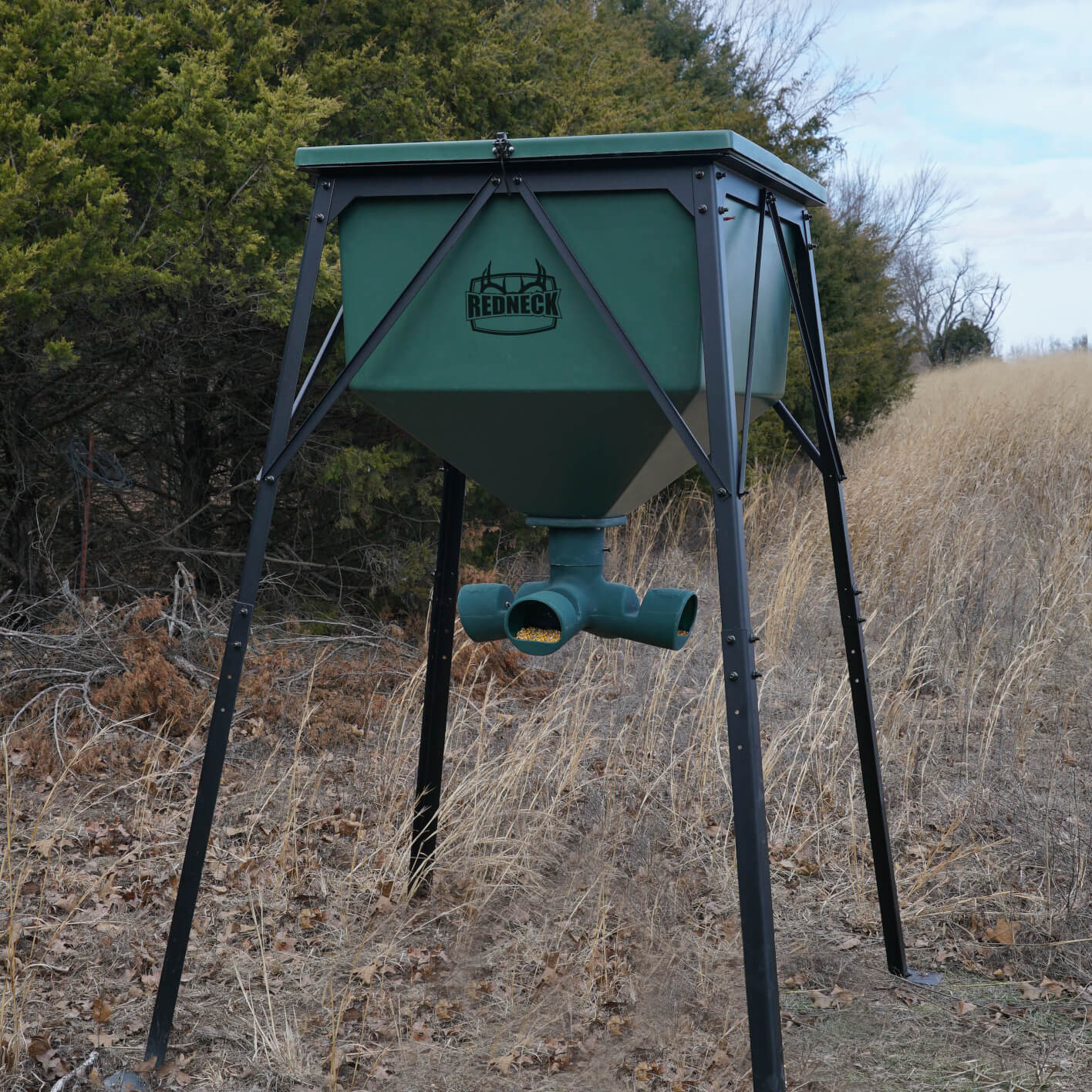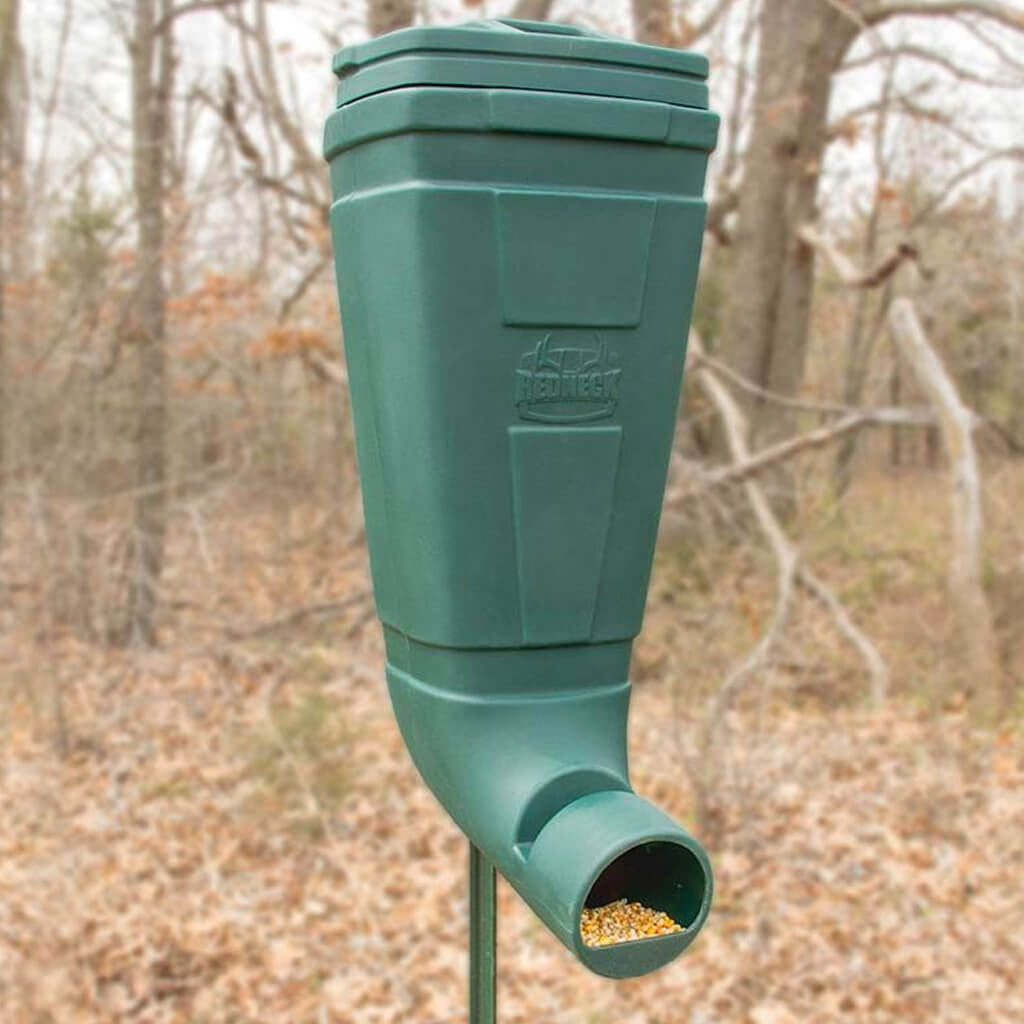Unveiling the Tricks of Successful Deer Attraction with FeedThatGame.com Feed Solutions
Wiki Article
The Duty of Deer Feeders in Wild Animals Monitoring and Habitat Preservation
Are you thinking about wild animals administration and environment preservation? Discover the essential function of deer feeders in accomplishing these goals. By enhancing deer nutrition and managing populations, feeders aid reduce problems between people and deer. Moreover, they contribute to promoting balanced ecosystems and boosting habitat quality. In this short article, we will explore the many benefits of deer feeders and their value in wild animals monitoring and conservation efforts. So, allow's dive in and discover more regarding these crucial tools.Enhancing Deer Nutrition and Wellness

One of the main advantages of making use of a deer feeder is that it permits you to manage the type and high quality of feed that deer take in. By using specifically formulated deer feed, you can offer crucial nutrients that may be lacking in their natural diet. This is specifically vital during times of limited forage schedule, such as the cold weather or throughout durations of drought.
Moreover, deer feeders can aid boost the overall wellness of the deer populace by reducing competitors for food. When food resources become scarce, deer might come to be a lot more territorial and aggressive, causing fights and injuries. By providing a constant food resource through a deer feeder, you can help relieve this competition and promote a much more unified feeding setting.
Along with improving nourishment, deer feeders can also be utilized as a management tool to draw in deer to particular locations for observation or hunting functions. By strategically positioning feeders in desired areas, you can produce opportunities for wild animals lovers and hunters to observe and engage with deer in a lasting and controlled manner.

Managing Deer Populations
To effectively manage deer populaces, it is necessary to apply strategies that focus on lasting populace control and habitat preservation. One key facet of managing deer populaces is through making use of controlled hunting. By very carefully controling the variety of deer harvested each year, wildlife managers can stop overpopulation and keep the deer populace at a healthy and balanced and sustainable degree. This aids to lower the negative impacts of deer on their environment, such as overgrazing and damages to plants.An additional important method in managing deer populaces is the production and maintenance of ideal habitats. Supplying abundant and varied food resources, sanctuary, and water is critical for deer populations to flourish - feedthatgame.com. This includes preserving and restoring all-natural habitats, in addition to executing habitat renovation projects. By boosting the top quality of the habitat, deer populations can much better maintain themselves and stay clear of becoming reliant on additional feeding.

Lessening Human-Deer Disputes
To minimize conflicts between humans and deer, it is essential to execute efficient techniques look these up that deal with the factors adding to these disputes (feedthatgame.com). One essential factor is habitat destruction, as urbanization and growth encroach upon all-natural deer habitats. By maintaining and developing green areas, such as parks and wild animals hallways, we can provide alternative environments for deer and minimize their interaction with human beingsAnother factor to take into consideration is the schedule of food sources. Deer are brought in to suburbs when they find quickly obtainable food, such as gardens and ornamental plants. To alleviate this, it is vital to educate house owners concerning deer-resistant landscape design choices and to promote making use of secure fencing or other deterrents to shield yards.
Furthermore, taking care of deer populations with responsible searching techniques can aid decrease conflicts. By applying open season and bag restrictions, we can preserve a balanced deer population, which lowers competitors for sources and decreases the possibility of deer trespassing on human regions.
Moreover, public understanding campaigns can play a considerable role in decreasing problems. These projects can enlighten the public regarding the significance of preserving a safe distance from deer, preventing feeding them, and appropriately throwing away waste to stop attracting them. By advertising responsible actions, we can minimize adverse communications in between deer and human beings.
Promoting Balanced Ecosystems
Promote a balanced environment by encouraging natural decreasing and foraging habits reliance on deer feeders. While deer feeders might seem like a practical method to draw in and maintain deer populations, they can interfere with the delicate equilibrium of a community. By depending solely on deer feeders, deer may end up being dependent on the very easy food resource, bring about overpopulation and unfavorable impacts on plant life and other wild animals.Encouraging natural foraging behaviors is essential for keeping a healthy ecological community. Enabling deer to forage for their food assists them create vital abilities, such as identifying and selecting nutritious plants. It also avoids overgrazing in certain areas, guaranteeing an extra also circulation of sources and minimizing the threat of habitat destruction.
Lowering reliance on deer feeders can also profit various other wildlife species. When deer congregate at feeders, it can develop a man-made focus of animals, which might result in boosted competition for sources and greater transmission prices of illness. By promoting all-natural foraging, deer will certainly disperse throughout their environment, lowering the risk of condition transmission and sustaining a more well balanced and diverse ecosystem.
Along with decreasing dependence on deer feeders, it is critical to concentrate on environment preservation and reconstruction. By enhancing natural habitats, we can provide a broader range of food sources for deer and various other wild animals. This includes growing native vegetation, producing food plots, and preserving all-natural hallways for motion.
Improving Habitat High Quality and Preservation Efforts
Indigenous plants give food and shelter for a range of animals, consisting of deer. These water includes serve as essential alcohol consumption and showering spots for deer and various other wildlife. By implementing these restoration and conservation techniques, you use this link play an essential role in improving environment quality and preservation initiatives for deer and other wild animals.Conclusion
In conclusion, deer feeders play an essential function in wild animals management and habitat conservation. By giving enhanced nutrition and advertising deer health and wellness, they contribute to the general health of the see this site deer populace.By enhancing deer nutrition and handling populations, feeders assist minimize disputes in between deer and humans.To boost deer nutrition and health and wellness, you can supplement their natural forage with a deer feeder.Additionally, deer feeders can aid enhance the total wellness of the deer population by reducing competition for food. While deer feeders might appear like a convenient way to bring in and sustain deer populaces, they can interfere with the delicate balance of an environment. By counting only on deer feeders, deer might end up being reliant on the simple food resource, leading to overpopulation and adverse influences on greenery and other wild animals.
Report this wiki page